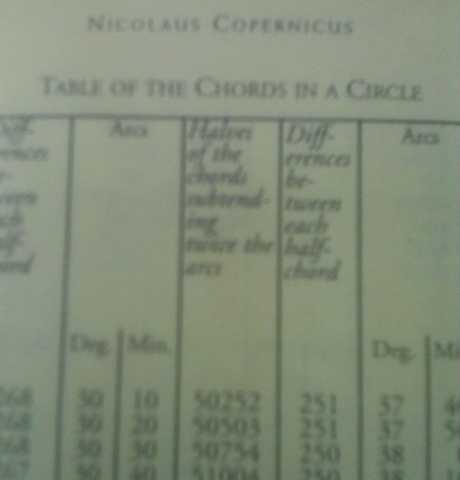Equations of Motion Revisited
Table of Contents
Introduction
In any school Physics course, the Newtonian equations of motion are very much a ‘stock’ item. Students learn the equations and are given a variety of problems that provide practice in determining which equation(s) to use to solve any particular problem. What is perhaps a little surprising is that in general, no one applies the well-established mathematical technique of completing the square given the standard equation: ##s(t)=ut+\frac{at^2}{2}##. In this article, we will do just that and then apply the derived equations to solve some typical problems which arise.
Completing the Square
Given: ##s(t)=ut+½at^2## write as $$ s(t) = \frac{a}{2}\left(t^2 + \frac{2ut}{a}\right)= \frac{a}{2}\left[\left(t + \frac{u}{a}\right)^2-\frac{u^2}{a^2}\right]$$ In a typical projectile problem, we might define the positive direction as upwards in which case the acceleration parameter g will be negative and the equation may be written as: $$s(t)=-\frac{g}{2}\left[\left(t – \frac{u}{g}\right)^2-\frac{u^2}{g^2}\right]=-\frac{g}{2}\left(t – \frac{u}{g}\right)^2+\frac{u^2}{2g}$$ The equation is now in a form which a Maths student -even one without any Science background – could easily recognize as the ‘base equation’ ##s(t)=-gt^2/2## right-shifted and up-shifted with a maximum turning point at co-ordinates: $$\left(\frac{u}{g};\frac{u^2}{2g}\right).$$ At this point it is worth noting that we can easily obtain: $$v(t)=s'(t)=-gt + u$$
The following diagram is a basic sketch for an initial (vertical) velocity of 10 m/s. Note that variable x being used (instead of t) is an artifact of the online graphing tool used.

The time for which the projectile is in the air (before reaching ‘ground’ level again) and its maximum height are immediately apparent from the equation written in the above form.
The pedagogical drawback of writing the equation in the above form is that a well-versed science student will instinctively (and reasonably) wish to replace g with -9.8 whereas the negative has already been factored in per derivation above. One could of course just leave variable a (acceleration) in place but in that case, one ends up with an equation which – at first glance anyway – has the appearance of a left-shifted, down-shifted parabola.
We should furthermore note that this equation is pertinent to what one might term the ‘classical’ projectile problem whereby an item is launched upwards (positive initial velocity) into the air. If the object is cast downwards then one is already on the right-hand side of the parabola in which case the axis of symmetry will have a negative t value.
Determination of t
In this author’s experience, the solution of t from the quadratic equation is rarely seen in practice. But seeing as we have the equation in completed square form above, it is relatively straightforward to determine a general solution: $$2gs=-g^2\left(t – \frac{u}{g}\right)^2+u^2=-(gt-u)^2+u^2$$ $$\Rightarrow gt-u=\pm\sqrt{u^2-2gs}$$ $$\Rightarrow t=\frac{u\pm\sqrt{u^2-2gs}}{g}$$Noting that ##\sqrt{u^2-2gs}## is equal to final projectile velocity v, we can write the solution in even simpler form: $$t=\frac{u\pm{v}}{g}$$ Now it should be apparent why t is rarely calculated using the quadratic formula – students rather calculate final velocity and then (essentially) employ the equation ##t=\frac{u \pm v}{g}##.
Once again if employing any of the above equations the reader (or student) must substitute g with a positive value since the negative has been factored in within the derivation of the completed square formula.
Worked Example
A crane is lifting a palette of bricks at a constant velocity of 1.8 m/s. At 15 m above ground, one of the bricks slips off the palette. Determine:
- The maximum height above ground reached by the brick
- Its velocity when it strikes the ground
- The time for which the brick is in free fall
Solution
For part 1. , the formula in the above form immediately supplies maximum height as ##\frac{u^2}{2g}## to which we must add the 15m: $$h_{max}=15 + \frac{1.8^2}{2\times9.8}\approx 15.17m.$$’Traditionally’ parts 2 and 3 would be solved in that order but we chose to first calculate t – using the above formula – and then determine ##v(t)=s'(t)## for that value of t: $$t=\frac{u\pm\sqrt{u^2-2gs}}{g}=\frac{1.8+\sqrt{1.8^2-2\times9.8\times(-15)}}{9.8}\approx1.943 s.$$We should justify our use of the positive square root in the formula above and we do so by noting that the solution is to the right of the axis of symmetry ##t=\frac{u}{g}##.
That was part 3. For part 2 we will use the derivative formula: $$v(t)=s'(t)=-gt+u=-9.8\times1.943+1.8=-17.24m/s.$$
2 Dimensional Projectile Motion
The formula we have derived above can be very easily adapted to deal with typical 2-dimensional projectile motion problems in which the initial projectile velocity is divided into vertical (##v_v=v_i\sin\theta##) and horizontal components (##v_h=v_i\cos\theta##) where ##\theta## is the angle at which the projectile is fired (measured from the horizontal). Since – in the absence of air resistance – the horizontal component does not change throughout the motion period, we can write: ##t=\frac{x}{v_h}## and thereby obtain an expression for the height of the projectile in terms of its horizontal distance x from the firing point: $$h(x)=-\frac{g}{2}\left(\frac{x}{v_h}-\frac{v_v}{g}\right)^2+\frac{{v_v}^2}{2g}$$. Isolating x as a variable inside the square bracket, this becomes $$h(x)=\frac{-g}{2{v_h}^2}\left(x-\frac{v_vv_h}{g}\right)^2+\frac{{v_v}^2}{2g}$$. With the equation in this form, the turning point (where the projectile reaches maximum height) is immediately apparent: $$x = \frac{v_vv_h}{g}$$ and $$h(x)=\frac{{v_v}^2}{2g}$$. Projectile range is given by twice the x value for the turning point: $$R=\frac{2v_vv_h}{g}=\frac{2{v_i}^2\sin\theta\cos\theta}{g}=\frac{{v_i}^2\sin(2\theta)}{g}.$$Self evidently maximum range is obtained when ##\sin(2\theta)=1## or ##\theta=45^{\circ}##.
Worked Examples
Our 2D projectile motion worked examples are taken from a source that already provides “worked examples”! This is convenient because the reader will be able to compare solutions by conventional methods against solutions using the technique described in the preceding paragraphs. Our source is the Physics Course material from the website “Lumen Learning” and the specific section from which the examples are taken is entitled “Projectile Motion”:
During a fireworks display, a shell is shot into the air with an initial speed of 70.0 m/s at an angle of 75.0º above the horizontal, as illustrated in Figure 3. The fuse is timed to ignite the shell just as it reaches its highest point above the ground. (a) Calculate the height at which the shell explodes. (b) How much time passed between the launch of the shell and the explosion? (c) What is the horizontal displacement of the shell when it explodes?
This example (parts a and c) simply requires us to calculate the turning point of the projectile motion: $$h(x)_{max}=\frac{{(v\sin\theta)}^2}{2g}=\frac{({70\sin75^{\circ}})^2}{2\times9.8}=233.25m,$$ and $$x = \frac{v_vv_h}{g}=\frac{70^2\sin150^{\circ}}{2\times9.8}=125 m$$. Finally for the time (part b) we simply divide the horizontal displacement by ##v_h## giving $$t=\frac{v_v}{g}=\frac{70\sin75^{\circ}}{9.8}=6.90s.$$
Kilauea in Hawaii is the world’s most continuously active volcano. Very active volcanoes characteristically eject red-hot rocks and lava rather than smoke and ash. Suppose a large rock is ejected from the volcano with a speed of 25.0 m/s and at an angle 35.0º above the horizontal, as shown in Figure 4. The rock strikes the side of the volcano at an altitude 20.0 m lower than its starting point. (a) Calculate the time it takes the rock to follow this path. (b) What are the magnitude and direction of the rock’s velocity at impact?
In essence, this problem is identical to the earlier example with a brick slipping from a palette being lifted by a crane. We follow the same technique for determining time in motion: $$t=\frac{v_v\pm\sqrt{{v_v}^2-2gs}}{g}=\frac{25\sin35^{\circ}+\sqrt{(25\sin35^{\circ})^2-2\times9.8\times(-20)}}{9.8}\approx3.96 s.$$The rock’s horizontal velocity (##25\cos35^{\circ}=20.48m/s##) will not change and its vertical velocity is given by the expression: $$v_v(t)=h'(t)=-gt+{v_v}_i=-9.8\times3.96+25\sin35^{\circ}=-24.47 m/s$$. The resultant velocity is therefore: $$\sqrt{20.48^2+(-24.47)^2}=31.91 m/s$$ at an angle of $$\tan^{-1}\left(\frac{24.47}{20.48}\right)=50.07^{\circ}$$ below the horizontal.
We might also be interested in graphing the projectile motion through the air. For this purpose, it will be convenient to employ the 2D equation of motion in turning point form: $$h(x)=\frac{-g}{2{v_h}^2}\left(x-\frac{v_vv_h}{g}\right)^2+\frac{{v_v}^2}{2g}$$

Summary and Conclusions
In this article, we have examined the standard equation of motion ##s(t)=ut+½at^2## by re-writing in standard turning point form. Although the resultant equation(s) might initially appear a little ‘ungainly’, they do make very apparent key parameters such as maximum height, time taken to reach maximum height, and (in the case of 2-dimensional motion) range of the projectile. From a teaching perspective, such an approach will also assist the student to better visualize projectile motion since he/she is made aware of the location of the parabola’s axis of symmetry and maximum point even if (in some examples) this will correspond to a negative t value.
Acknowledgments
I would like to thank PF advisors/users Charles Link, Berkeman, Dlgoff, jim mcnamara , vanhees71, and mfb who all took the time to respond to the “request for review” by looking through the article and commenting where appropriate. Hopefully as a result it is reasonably free of errors although I do need to add to the ‘thanks’ list PF user Richard R Richard who alerted me to an incorrect unit and incorrect order of solutions in one of the worked examples.
As always without Greg Bernhardt, there would be no PF and most of the ideas I have had for articles would have simply ended up gathering dust amidst well-thumbed textbooks (example below!), reams of past papers, and other ‘detritus’ teachers collect over the years!

References
| [1] | Roger Hinrichs Paul Peter Urone. 3.4 Projectile Motion – College Physics | Openstax.https://openstax.org/books/college-physics/pages/3-4-projectile-motion, June 2012. (Accessed on 01/10/2021). [ bib ] |
| [2] | Desmos. Desmos | Graphing Calculator. https://www.desmos.com/calculator. (Accessed on 01/10/2021). [ bib ] |
- BSc (Elec Eng) University of Cape Town, HDE University of South Africa
- Maths and Science Tutor, Florida Park, Johannesburg
- Research areas (personal interest): Hydrogen / Hydrogen-like spectra. Historical Maths.
- Wikipdedia contributions: Ptolemy’s Theorem, Diophantus II.VIII, Continuous Repayment Mortgage










Hello, in the calculation of the two proposed examples, the order of the presentation of the development of the calculation of points 2 and 3 or (b and c) are reversed, also the result of the speed is offered in meters and not in meters over seconds in the first example.
"
Thanks for the correction(s). Have amended accordingly.